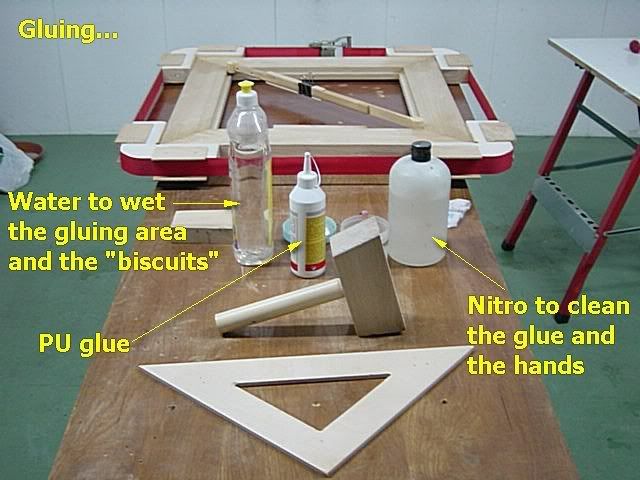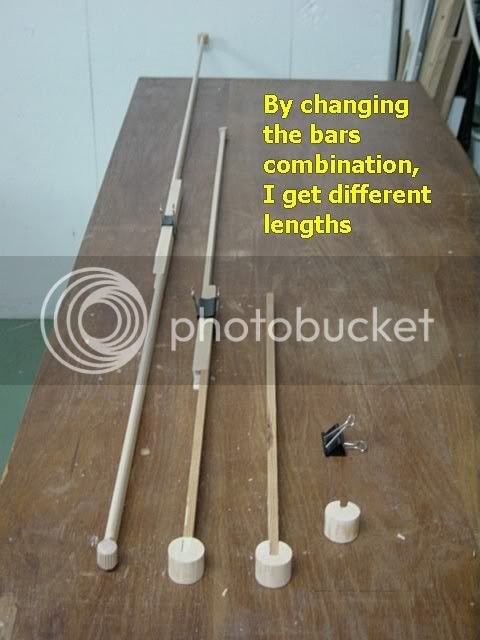billbeee
Member
Hi All,
Just signed up so I thought an intro might be in order.
I'm an Aussie builder, ten quid tourist but still a Lancashire lad.
I spend a fair bit of my retirement time writing stuff like this.
For a rectangle to be true, that is with all the corners being at 90 degrees, the diagonals distances between opposite corners will be the same length.
This is so simple and well known that sometimes we forget it completely. All the time I see people squaring something up with say a steel square when a check of the diagonals would be far more positive and accurate.
In the bad old days before the retracting metal tape measures came out we used to do a lot of our measuring and marking out with rods of timber.
* Let's say I am making a door, it is clamped up and glued, and ready for the wedging up.
* Just before this, even though I know my shoulders on my tenons are all spot on square, I reach for my squaring rod and give it a final check.
I reach for my squaring rod and give it a final check.
* The rod is just a length of beading, say 20mm x 12mm with a smaller piece of the same material pinned underneath.
* The smaller piece underneath has a long tapered point on it to allow it to fit right into the very corner of the frame.
* I mark off one diagonal length and then the other.
* The distance between the marks is double the amount that the door is out of square.
* So a pencil mark in the middle of the two is the correct diagonal length.
* In this example of a door, I would loosen off the clamps and push along the longer diagonal until both diagonals are equal.
* As with setting out rods, the squaring rods were made with pine timber that a swift stroke with a smoothing plane would clean off the old marks and leave it fresh for the next job.
I can't remember the last time I made a mortise and tenon door, or a timber window frame with fitted sashes, but I can remember a couple of years ago when I used a squaring rod to check steel gates that I was fabricating.
I am not saying let's go back to using rods, but intrinsically it is more accurate than a tape measure, and there is no mental arithmetic to do. Also it is a one man operation. No second pair of hands holding the end of the tape, when he could be doing something else.
The point of using a diagonal measure is that an individual piece of material in a frame, can have a bend in it, and so throw out any readings that you might take with a hand square. By checking the diagonals with a rod or a tape measure your work will be far more accurate.
A hand square measures a small length, a diagonal measure is a lot longer and therefore more accurate. In addition the gap between the two distance marks is double the actual error and so easier to see.
Cheers
Bill
Just signed up so I thought an intro might be in order.
I'm an Aussie builder, ten quid tourist but still a Lancashire lad.
I spend a fair bit of my retirement time writing stuff like this.
For a rectangle to be true, that is with all the corners being at 90 degrees, the diagonals distances between opposite corners will be the same length.
This is so simple and well known that sometimes we forget it completely. All the time I see people squaring something up with say a steel square when a check of the diagonals would be far more positive and accurate.
In the bad old days before the retracting metal tape measures came out we used to do a lot of our measuring and marking out with rods of timber.
* Let's say I am making a door, it is clamped up and glued, and ready for the wedging up.
* Just before this, even though I know my shoulders on my tenons are all spot on square,
* The rod is just a length of beading, say 20mm x 12mm with a smaller piece of the same material pinned underneath.
* The smaller piece underneath has a long tapered point on it to allow it to fit right into the very corner of the frame.
* I mark off one diagonal length and then the other.
* The distance between the marks is double the amount that the door is out of square.
* So a pencil mark in the middle of the two is the correct diagonal length.
* In this example of a door, I would loosen off the clamps and push along the longer diagonal until both diagonals are equal.
* As with setting out rods, the squaring rods were made with pine timber that a swift stroke with a smoothing plane would clean off the old marks and leave it fresh for the next job.
I can't remember the last time I made a mortise and tenon door, or a timber window frame with fitted sashes, but I can remember a couple of years ago when I used a squaring rod to check steel gates that I was fabricating.
I am not saying let's go back to using rods, but intrinsically it is more accurate than a tape measure, and there is no mental arithmetic to do. Also it is a one man operation. No second pair of hands holding the end of the tape, when he could be doing something else.
The point of using a diagonal measure is that an individual piece of material in a frame, can have a bend in it, and so throw out any readings that you might take with a hand square. By checking the diagonals with a rod or a tape measure your work will be far more accurate.
A hand square measures a small length, a diagonal measure is a lot longer and therefore more accurate. In addition the gap between the two distance marks is double the actual error and so easier to see.
Cheers
Bill






